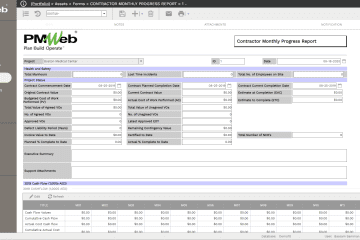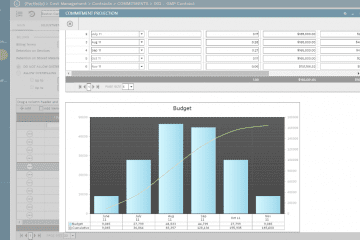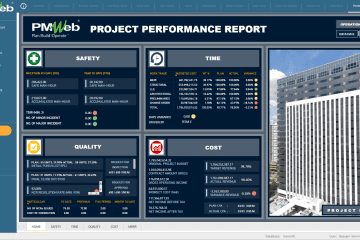When it comes to delivering capital construction projects, the use of earned value management (EVM) measures and metrics are very common to report the project’s cost performance. Those measures will mainly include the cost variance (CV), cost performance index (CPI), and variance at completion (VAC) which is the difference between the budget at completion (BAC) and estimate at completion (EAC). The estimate at completion (EAC) is calculated by summing the actual cost (AC) and the estimate to complete (ETC) values.
From a project owner perspective, for lump-sum contracts, the cost variance (CV) will always be equal to the schedule variance (SV) and the cost performance index (CPI) will always be equal to the schedule performance index (SPI). This is due to the fact that the budget at completion (BAC) value will be always updated with the approved change orders for which the earned value (EV) and actual cost (AC) values will be calculated by using the same approved percent complete value for the period.
Although by definition, the estimate to complete (ETC) is the difference between the budget at completion (BAC) and earned value (EV), nevertheless the estimate to complete (ETC) could be adjusted or revised based on the actual performance to date, commitment values for material, estimates of future conditions, estimates of potential changes and estimates of change orders that are under review.
The use of formulas to calculate the anticipated estimate to complete (ETC) could prove to be inaccurate, unjustifiable, and sometimes biased thus providing false information for project stakeholders on the expected project budget overrun value. Some of those most commonly used formulas include ETC that will be influenced by past cost performance (ETC = (BAC-EV)/ CPI), ETC that will be influenced by factors of 80% of past cost and 20% past schedule performance (ETC = (BAC-EV)/ (0.8 X CPI + 0.2 X SPI)), ETC that will be influenced by last 3 months cost performance (ETC = (BAC-EV)/ (CPI1+ CPI2+ CPI3)), and ETC that will be influenced by past cost and schedule performance (ETC = (BAC-EV)/ (CPI X SPI)). Therefore, it is crucial that all adjustments made to the anticipated estimate to complete (ETC) are fully documented, traceable, and auditable.
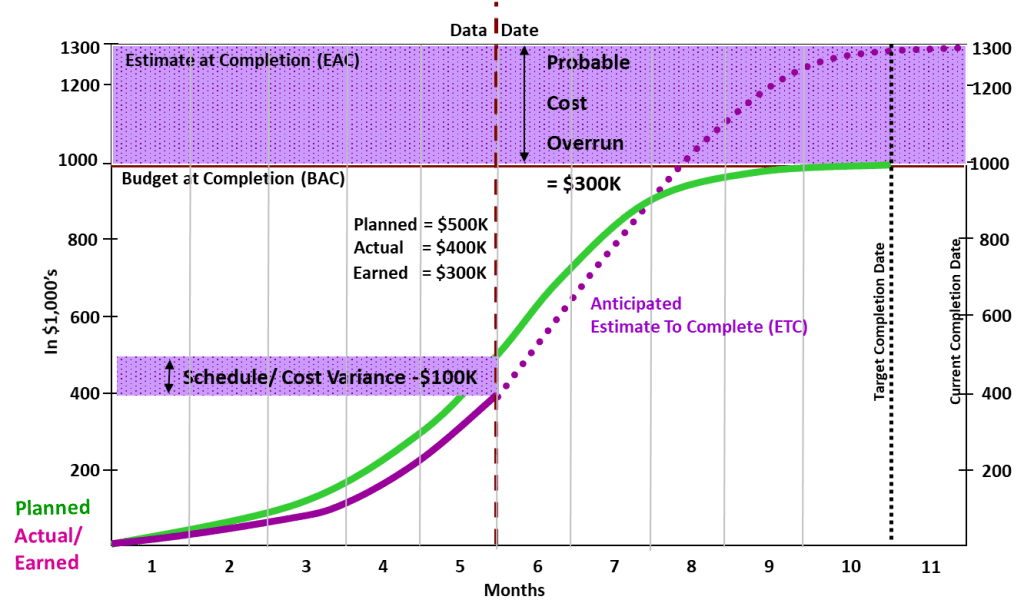
The updated cost loaded schedule developed by the scheduling software, like Primavera P6, will provide the estimate to complete (ETC) projection for the remaining project duration. The calculated estimate at completion (EAC) should be equal to the budget at completion (BAC) and thus the variance at completion (VAC) should be always equal to zero. The updated cost loaded schedule will include all adjustments made for approved change orders to date and for which the original baseline schedule was revised to reflect the value of those approved changes on the budget at completion (BAC) value.
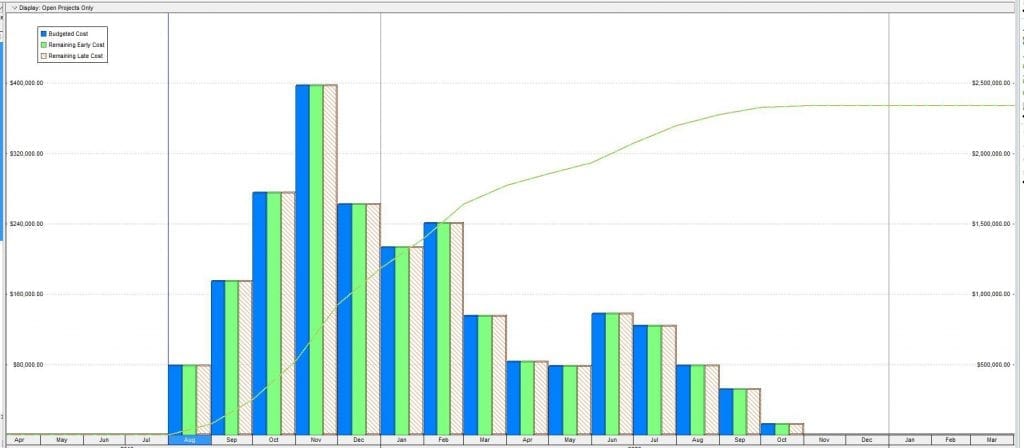
Using a Project Management Information System (PMIS) like PMWeb, all potential changes and change orders that are still not approved will be formally managed, documented, and reported on. This will require each process to have an input form, capability to attach all supportive documents, and link all relevant records and imported MS Outlook email and a workflow to formalize the tasks for submitting, reviewing, and approving those processes.

PMWeb Potential Change Order module enables the project team to have an early warning notification (EWN) system to capture the details of all potential changes and notices of claims that could impact the value of the awarded commitment contracts. Access to this module will be provided to all project team members who are authorized to report any anticipated event that could have an impact on the awarded commitment contracts.
The form will include fields to capture the cause for the reporting the potential change which could be a suspension of works, the owner caused the change, error/omissions in contract conditions, unforeseen site conditions, delayed payment, fluctuation in quantities, design change, late approval of the submittal, delayed/interrupted site access among others. In addition, the field will include the anticipated cost value which needs to be detailed to the project’s cost breakdown structure (CBS) levels as well as to which project period it will impact. The form also capturing the time impact duration that could be caused by this potential change order.
In addition, a user-defined field to capture the “Probability to Incur” value will be added to the form. The main objective of this field is to provide the project team with the option to either use the total value of the potential change order when it comes to adjusting the project’s estimate to complete value or part of the value based on the “Probability to Incur” percentage value.
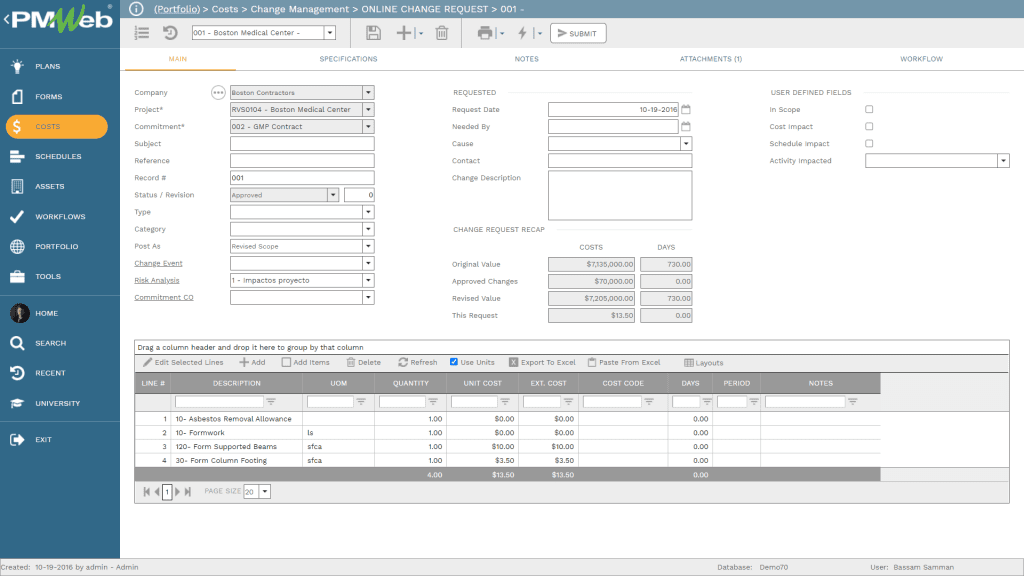
To provide justification for submitted potential change orders, all supportive documents need to be attached to the form. Those documents can be uploaded directly into PMWeb or uploaded and stored in the PMWeb document management repository and then attached to the potential change order. In addition, links to other relevant PMWeb records, for example, a Request for Information, Daily Report, Submittal among others as well as links to imported MS Outlook emails can be added.
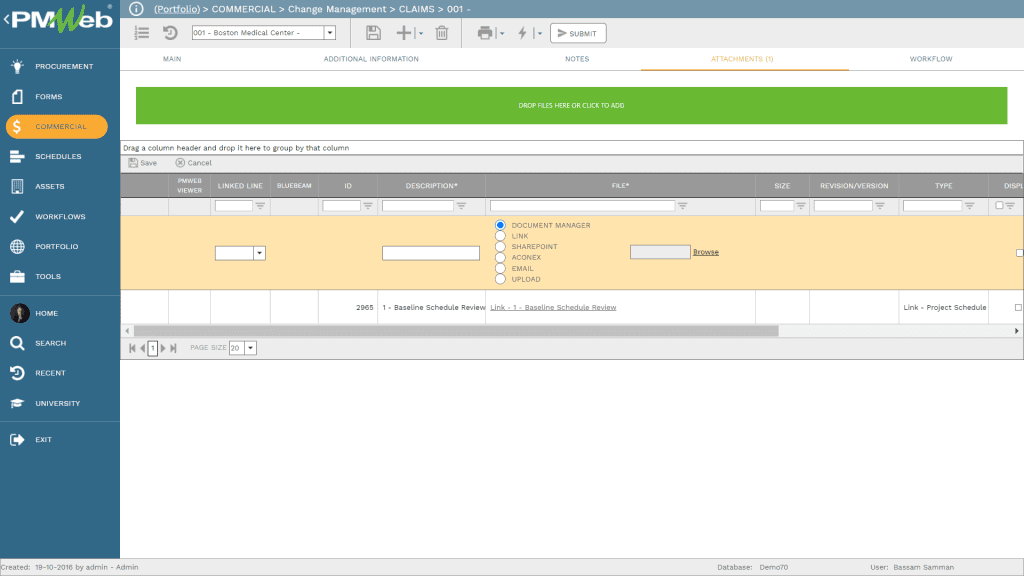
Similar to all other PMWeb modules, the potential change order module could be assigned a workflow to formalize the review and approval of the submitted change. The workflow will identify the workflow steps, duration, responsibility, available action types, and sequence.
In addition, the workflow could include conditions to enforce the approval authority rights assigned to the project. For example, if the potential change order total amount exceeds a certain value, then could require an additional approval level for the approval or rejection of the potential change order. It should be noted that only approved potential change orders that found that they have merit could be used to generate a change order that still needs to be formally submitted and reviewed before it can be approved as a change order or not.

For approved potential change orders that were used to generate the change orders as well as other directly added change orders, the PMWeb change order module will be used to manage the review and approval process of those change orders. Approved change orders will be used to adjust the commitment contract agreement as well as will be included in the interim progress invoice valuation. The form will enable capturing all details that relate to the change order including the cost details which need to be detailed to the project’s cost breakdown structure (CBS) levels as well as to which project period it will impact. The form also allows capturing the anticipated prolongation days to the contract duration.
In addition, a user-defined field to capture the “Probability to Incur” value will be added to the form. The main objective of this field is to provide the project team with the option to either use the total value of the change order when it comes to adjusting the project’s estimate to complete value or part of the value based on the “Probability to Incur” percentage value.
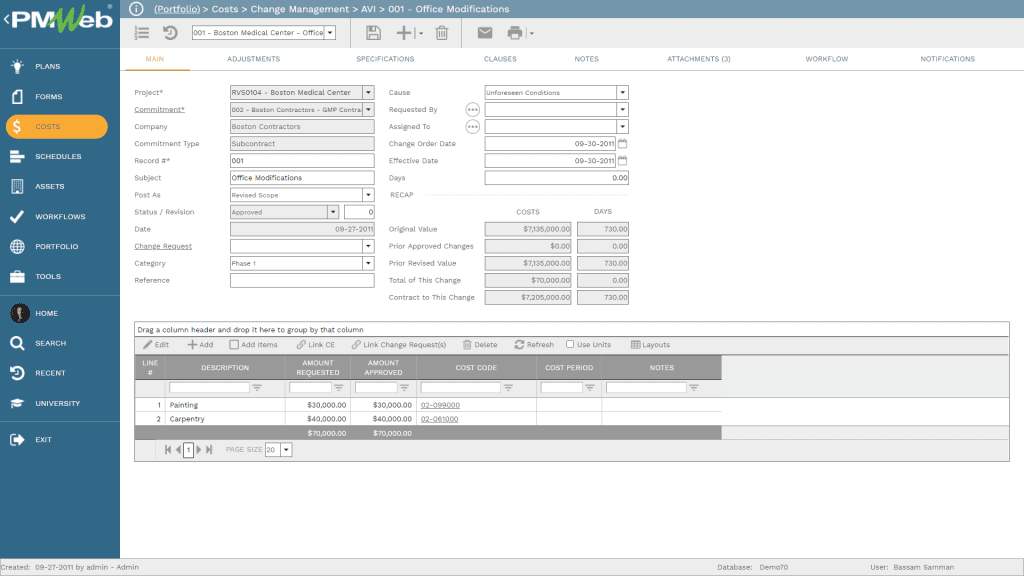
Similar to the potential change order process, all supportive documents, relevant record links, and imported MS Outlook emails will be added to the change order form. In addition, a workflow will be assigned to formalize the process for submitting, reviewing, and approving or rejecting those change orders.
The values of all pending potential change orders and pending change orders will be used to adjust the anticipated estimate to complete (ETC) projection which will be generated from the updated cost-loaded project schedule. The adjustment can be based on the total value of those pending documents or by adjusting their values by using the probability to incur percentage value. Those values will be posted to their relevant project period as per the captured details.
The Anticipated Cost At Completion (EAC) report will display the Planned Value (PV) and Estimate To Complete before adjustment values will be extracted from the updated integrated project cost-loaded schedule. On the other hand, the Earned Value (EV)/ Actual Cost (AC) values will be extracted from the PMWeb progress invoice module. This will ensure that the EV and AC values for the elapsed periods are captured accurately and as per the approved interim payment certificate value. in addition, the values for the pending potential change orders and change orders will be captured from PMWeb as detailed above. Those values will be used to create the anticipated Estimate to Complete (ETC) curve as well as calculate the value for the Estimate at Completion (EAC). The Variance at Completion (VAC) value will be calculated from the difference between the Budget at Completion (BAC) and Estimate at Completion (EAC) values.

